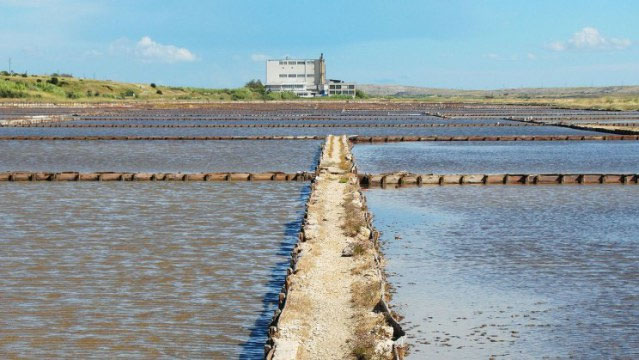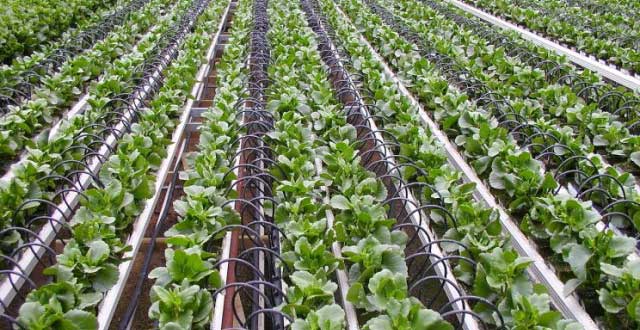The anti-drought technology in agriculture is remarkable
Drip irrigation, desalination of water sources, or water intake from the air are the anti-drought technologies currently in use in the world.
By definition, drought occurs when rainfall in an area is lower than average. Although it is simple, the impact of drought on agriculture and life is huge. This is considered a natural disaster that can destroy the ecosystem. According to statistics, drought is the most natural disaster affecting people in the past 40 years.
In this situation, many innovative anti-drought solutions were born. And here are 7 notable measures:
Desalination of water sources

If there is a method of desalinating water, we will have huge freshwater resources from the oceans.
Although more than 70% of the earth's surface area is water, only 0.003% is fresh water. In many areas of the world, rain is the only source of freshwater. So, if there is a method of desalinating water, we will have huge freshwater resources from the oceans.
However, this is not easy because it takes a lot of energy. More specifically, for desalination, water must first be boiled into a gas, then proceed to condense into fresh water. To boil, we must use a large amount of fossil fuels.
However, this option would probably be more feasible when experts are trying to develop a filter from graphene (material from pure carbon that is only 1 atom thick). Then, desalination will simply rely on hydrostatic pressure.
Drip irrigation

Drip irrigation optimizes water supply to plants and soil moisture.
Drip irrigation optimizes water supply to plants and soil moisture. This is a method to help avoid wasting water. Based on demand, there are many easy-to-use drip irrigation systems and affordable prices on the market today.
Not only that, the researchers also developed drip irrigation systems using IoT technology and operate without human intervention. The ultimate goal of these inventions is to ensure that each crop receives the right amount of water, and that the water is immediately irrigated to the root position of the plant.
Get water from the air

The device takes the steam from the air and passes it through two different temperature zones to condense this gas
As we know, the air contains a lot of ingredients, and one of them is steam. If it is possible to design some device to extract water vapor from the air and condense it, we can easily 'extract' water from the air.
It sounds magical, but that is the study that was successfully implemented by the Massachusetts Institute of Technology (MIT).
Accordingly, a device with metal-organic frames (MOFs - Metal-Organic Frameworks) , powered by solar energy, when operating, the device takes steam from the air and moves through two different temperature zones. to condense this gas.
Not only in theory, this device has successfully tested it in an Arizona test. Now, the team hopes to develop the scale of the system so that it can generate large amounts of water in a short time.
The advantage of this solution is that it does not use electricity and can create water in desert areas.
Improve plant varieties

We should improve plant varieties so that they both increase yields and increase tolerance during the drought period.
Instead of building external irrigation systems to ensure plants are always supplied with enough water, why don't we improve the genes of these crops so that they both increase yields and increase stamina during the drought period?
This idea has been implemented in many different places around the world. A good example is the study of the organization Realizing Increased Photosynthetic Efficiency (RIPE). They have improved plant varieties with 25% water use efficiency.
Solar pumps

Solar pumps are becoming more and more popular because electricity is not required.
The most common way to supply water to plants or livestock is to pump water from the ground. However, these pumps often run on electricity, or in other words, use fossil fuels.
Currently, solar pumps are becoming more and more popular because electricity is not required. Governments in some countries have recognized the potential of this type of pump and conducted subsidy packages so that farmers can install it at affordable prices.
Recycle organic waste
One of the most effective ways to increase soil water holding capacity is to add organic ingredients to the soil. So now, many farmers use organic waste from supermarkets to fertilize the soil. Then the plant will thrive without regular water supply.
This is a very beneficial solution as both improving crop yields and minimizing organic waste from shops and supermarkets.
Plant more trees

Trees will improve environmental quality, increase rainfall.
This solution may sound 'outdated', but growing plants is always the best way to minimize the effects of drought. Trees will improve environmental quality, increase rainfall. Many countries have been aware of this problem and implemented projects to turn bald hills into green forests.
By applying innovative ideas and anti-drought solutions, we can both mitigate the harmful effects of drought, and provide measures to completely prevent this disaster.
- Drought spreads causing serious damage in China
- Drought proof by biotechnology
- Binh Dinh 'asking for 100 billion dong to combat drought
- Russian agriculture lost more than $ 1 billion due to the weather
- How far have people traveled in their fields?
- Saving irrigation technology - Drought response solution
- Japanese experts show how to raise income for Vietnamese farmers
- Agriculture during AI: Revolution towards sustainable goals
- Human anti-drought weapons are here
- More than half of America has suffered from drought
- 12 ways Israelis change world agriculture (P2)
- New discovery of the history of agriculture in Eurasia
 The US company is about to build a supersonic passenger plane of 6,000km / h
The US company is about to build a supersonic passenger plane of 6,000km / h Japan develops avatar robot as in fiction film
Japan develops avatar robot as in fiction film Australia tested the world's first mango picking robot
Australia tested the world's first mango picking robot America develops technology to separate water from animal waste
America develops technology to separate water from animal waste